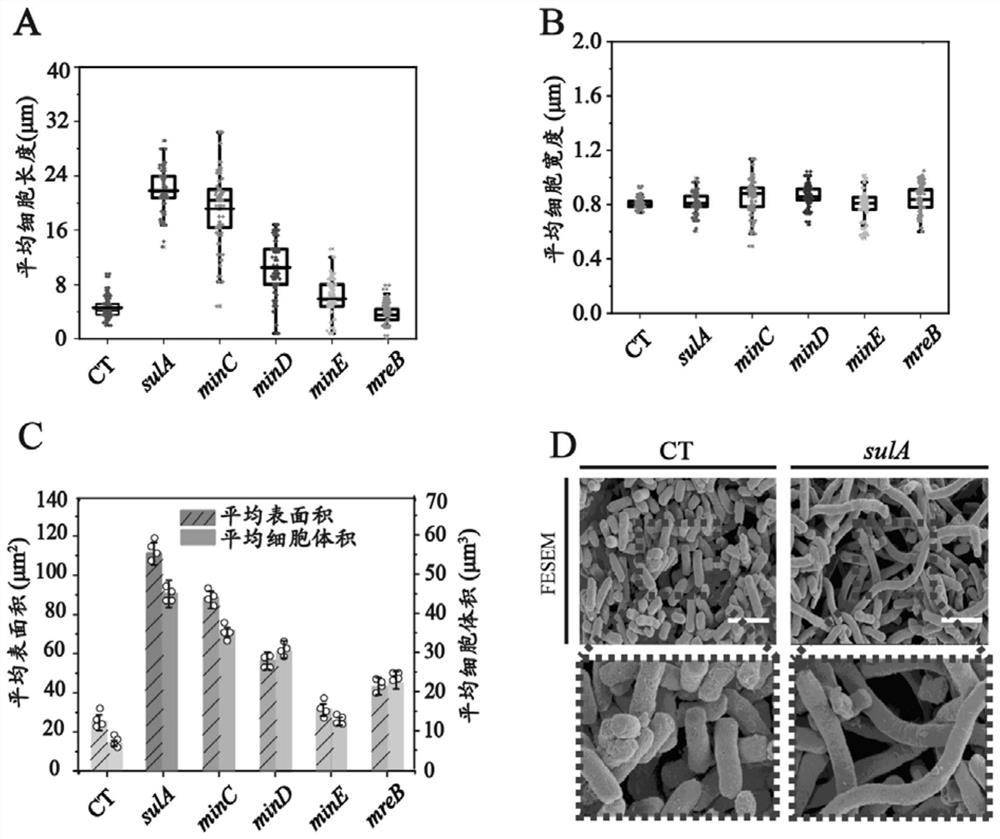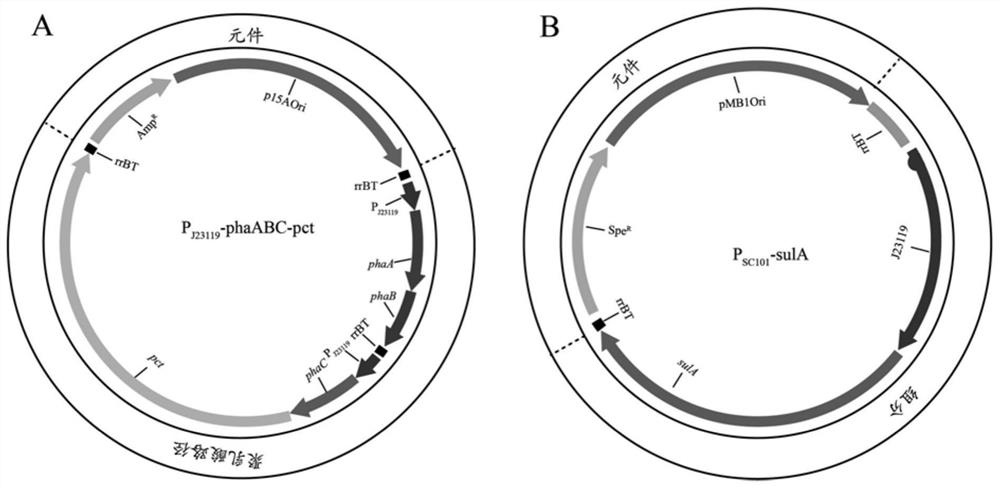A strategy to improve the production performance of polylactic acid by regulating cell morphology
A technology of polylactic acid and cells, which is applied in the field of bioengineering, can solve the problems of difficult downstream separation, long time consumption, and large pollution, and achieve good application prospects, low strain growth load, and fewer system components.
- Summary
- Abstract
- Description
- Claims
- Application Information
AI Technical Summary
Problems solved by technology
Method used
Image
Examples
Embodiment 1
[0037] Example 1 Evaluation of Cell Morphology
[0038]The sulA gene encoding the cell division inhibitor sulA, the minC gene encoding the septum-forming protein (nucleotide sequence shown in SEQ ID NO.8), the minD gene (nucleotide sequence shown in SEQ ID NO.9), minE gene (nucleotide sequence as shown in SEQ ID NO.10), mreB gene encoding cytoskeletal protein (nucleotide sequence as shown in SEQ ID NO.11), the ATG position in front of the gene was respectively adopted in the way of fusion PCR Add B0034RBS. The above PCR products were recovered and ligated with the vector pSC101 plasmid by enzyme digestion to obtain recombinant plasmids pSC101-sulA, pSC101-minC, pSC101-minD, pSC101-minE, pSC101-mreB, respectively.
[0039] The obtained recombinant plasmids pSC101-sulA, pSC101-minC, pSC101-minD, pSC101-minE, and pSC101-mreB were respectively introduced into competent cells E. coli JM109 to obtain plasmids containing the cell division inhibitor sulA.
[0040] In LB medium, the ...
Embodiment 2
[0041] The detection of polylactic acid content in the shake flask of embodiment 2
[0042] The already constructed expression polylactic acid synthesis pathway ( figure 2 ) Carrier P of related genes J23119 -phaABC-pCT and pSC101-sulA( image 3 ) into the competent cells of the lactic acid production strain GL0002 to obtain J23119 - Polylactic acid producing strains of phaABC-pCT and pSC101-sulA plasmids.
[0043] The above-mentioned polylactic acid production strains were cultured in NBS medium, 37°C, 200rpm, and the initial OD of strain fermentation was 600 0.04, fermented for 85h. Identify the content. The result is as Figure 4 As shown, with the prolongation of bacterial culture time, the content of intracellular polylactic acid can increase to 24.2w%, the dry weight can also increase to 8.12g / L, and the glucose consumption increases gradually. At the same time, it can be seen that due to the elongation of the cells, the polylactic acid content in the cells incre...
Embodiment 3
[0045] The detection of polylactic acid content in the fermentor of embodiment 3
[0046] The fermentation performance of the DS7 strain was tested in a 7.5L fermenter filled with NBS medium. Liquid volume is 3.5L, pH is 6.7, pressure is 1mpa, temperature is constant at 37°C, 500rpm, initial inoculation OD 600 is 0.2, the ventilation rate is 1vvm, and the fermentation cycle is 84h.
[0047] Such as Figure 5 As shown, at the end of the fermentation, the accumulated content of polylactic acid reached 53.8w%, and the dry weight reached 27.2g / L.
PUM
 Login to View More
Login to View More Abstract
Description
Claims
Application Information
 Login to View More
Login to View More - R&D
- Intellectual Property
- Life Sciences
- Materials
- Tech Scout
- Unparalleled Data Quality
- Higher Quality Content
- 60% Fewer Hallucinations
Browse by: Latest US Patents, China's latest patents, Technical Efficacy Thesaurus, Application Domain, Technology Topic, Popular Technical Reports.
© 2025 PatSnap. All rights reserved.Legal|Privacy policy|Modern Slavery Act Transparency Statement|Sitemap|About US| Contact US: help@patsnap.com



